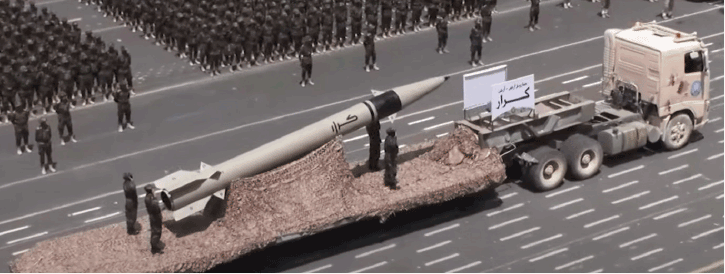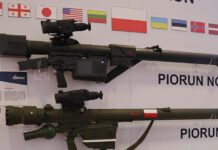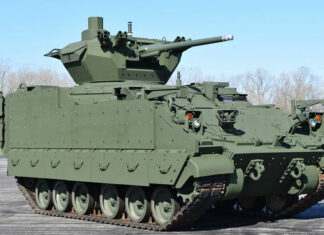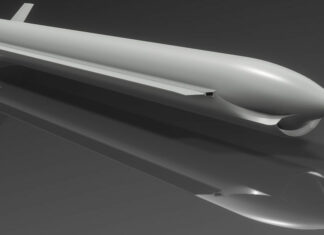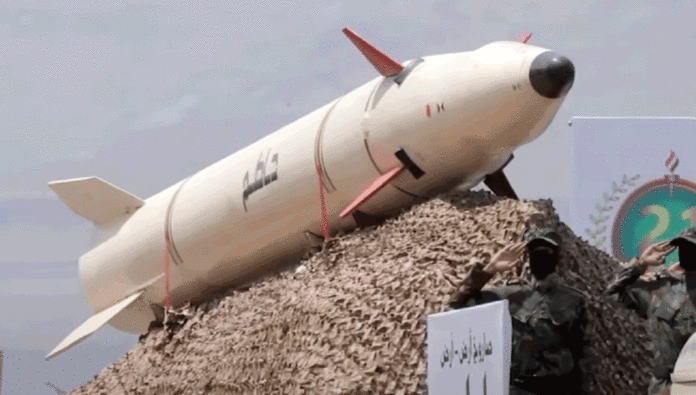
New ballistic, cruise and loitering missiles were shown by the Houthis in the recent military parade in Sanaa, Yemen. Among the new missiles were several types of precision-guided ballistic missiles, capable of attack at ranges from 300 to 1,400 km, carrying warheads weighing up to half a ton. All missiles are believed to be Iranian designed, they were likely delivered to Yemen as pre-assembled or knocked down kits.
[wlm_nonmember]
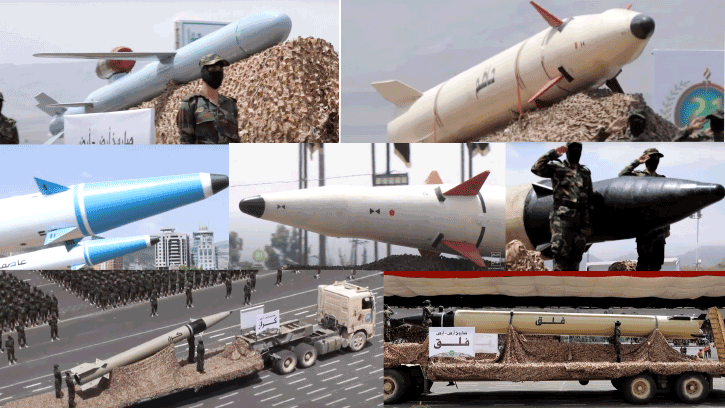
Subscribe to read the full version[/wlm_nonmember]
[wlm_ismember]
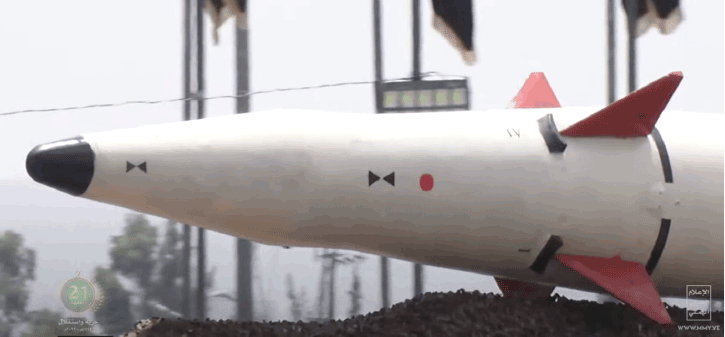
Hatem – A new missile blending several design features from Russian and Iranian missiles; this missile bears many similarities to the Iranian Kheibar Shekan, which was introduced by Iran in 2022. Like the Iranian missile, Hatem uses solid propulsion and has four large aerodynamic fins for trajectory correction, turning this large missile into a precision strike weapon. At an initial gross weight of 4500 kg, Kheibar Shekan carried half a ton of payload to 1,450 km. The warhead is carried in a maneuverable reentry vehicle that separates from the missile’s body upon reentry, thus avoiding conventional missile defense systems. The missile is 10.5 meters long, and its diameter is 800 mm.
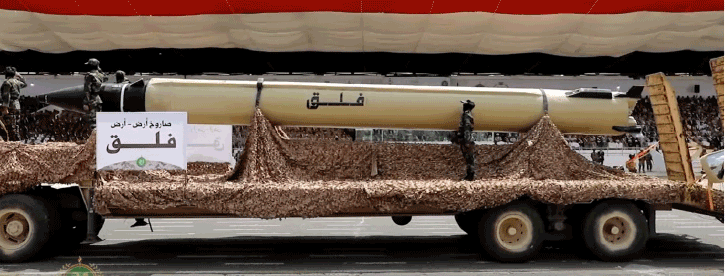
FALAQ – long-range ballistic missile using liquid propulsion likely based on Iran’s Qiam-1 missile. Falaq seems to be a Burkan 2H derivative of the operationally proven Burkhan-H, which is also based on the Iranian Qiam-1 missile. Burkhan H has been used by the Houthis in recent years on attacks against Saudi Arabia. Qiam-1 missiles were also used by Iran in their attack on the Ain Assad airbase in Iraq, following the killing of Kassem Suleimani by the US forces in 2019. Qiam 1 has a range of 800 km. According to missile expert Tal Inbar, one of the distinctive changes in Falaq. Unlike the Irani Qiam-1, Falaq has small rectangular fins at the base and what looks like two retro-rockets designed to separate the reentry vehicle carrying the warhead from the missile’s body.
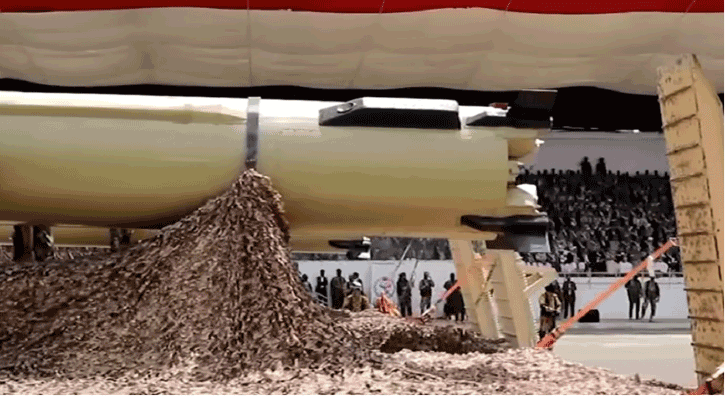
According to CSIS MissileThreat report, Qiam-1 is distinguished from other Scud variants by its lack of tail fins, instead using a thrust vector control system to stabilize the missile. The missile also uses a separable warhead and ground-based radio guidance system, improving its accuracy over prior Scud-based designs. In addition to improving accuracy, the reentry vehicle’s configuration could reduce the radar signature, potentially increasing its survivability against missile defenses.

Karar is likely a derivative of the Iranian Zolfaghar missile. It uses a solid rocket to reach up to 700 km range, carrying a warhead weighing 400 – 650, according to the missile’s configuration. The Houthis claim a slightly shorter range (500 km), which corresponds with a heavier warhead. The Iranian missile is described as a precision strike weapon, delivering a warhead weighing half a ton within 10-30 meters from the designated location.
A similar weapon is designed for anti-ship missions, probably derived from the Iranian Zolfaghar Basir. This variant delivers a warhead weight of 550 kg to attack ships at sea at ranges of up to 400 km range. Terminal homing is based on radar or infrared seeker.[/wlm_ismember]
More posts related to this topic:
- Houthi’s New Naval Weapons Extend Their Reach 200 nm into the Gulf of Aden
- Houthi’s Display a New Cruise Missile: Quds-3
- New Ballistic Missiles Displayed at the Houthi’s Military Parade
-
Yemeni Houthis Display Iranian Drones and Loitering Missiles
